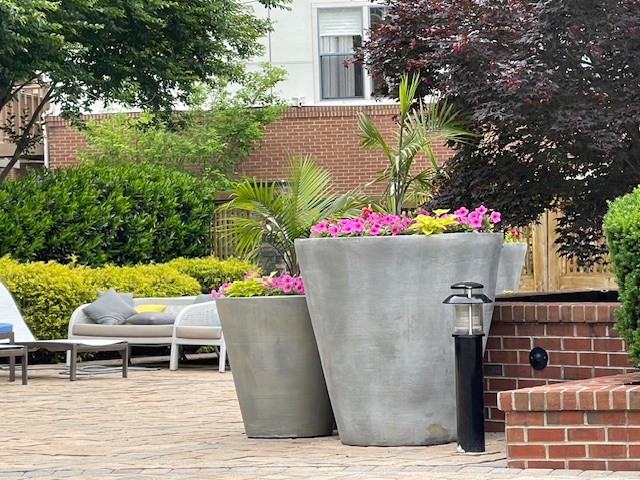When storms strike Centreville or hazardous trees threaten your property, immediate professional response can mean the difference between minor cleanup and major property damage. WC Landscape provides 24-hour emergency tree removal services throughout Centreville, VA, combining rapid response times with expert arboricultural knowledge and professional-grade equipment. Our experienced team of certified arborists and tree removal specialists responds quickly to emergency calls, safely removing fallen trees, storm-damaged limbs, and hazardous trees that pose immediate threats to homes, vehicles, power lines, and personal safety. With over 40 years of combined experience and deep knowledge of Northern Virginia's tree species and weather patterns, we handle emergency tree situations with the expertise and urgency they demand, protecting your property while restoring safety to your outdoor spaces.



Severe weather events in Centreville can cause immediate tree emergencies requiring professional intervention. Our 24-hour emergency response team mobilizes quickly to address storm-related tree damage, prioritizing situations that threaten life, property, or utility services.
Our immediate storm response includes:
Trees that pose immediate danger to people or property require emergency removal regardless of weather conditions. Our hazardous tree specialists assess and remove dangerous trees using advanced rigging techniques and safety protocols.
Trees in contact with power lines create extremely dangerous situations requiring specialized expertise and coordination with utility companies. Our certified line clearance specialists handle emergency power line tree situations with appropriate safety protocols.
Never attempt to remove trees or branches in contact with power lines without professional utility clearance and specialized equipment. Contact our emergency line immediately for power line tree emergencies.
Fallen trees blocking driveways, roads, or emergency access routes require immediate professional removal to restore critical access for residents and emergency services.
When you contact WC Landscape for emergency tree removal, our response follows established protocols designed to quickly assess the situation and implement appropriate safety measures.
Emergency tree removal often requires specialized techniques and equipment to safely remove trees in compromised positions or dangerous locations.
Emergency tree removal creates substantial debris requiring efficient cleanup and proper disposal to restore property functionality and appearance.
Centreville's climate and geographic location create specific weather-related tree emergency patterns that our experienced team recognizes and responds to effectively.
Ice Storm Tree Damage: Northern Virginia ice storms create unique emergencies when ice accumulation causes massive branch failure and complete tree collapse. Ice loading can increase branch weight by 30 times normal loads, causing sudden failures even in healthy trees.
Tropical Weather Systems: Occasional tropical storms and hurricanes bring sustained winds and heavy rainfall, creating soil saturation and prolonged wind loading that can cause delayed tree failure hours or days after the storm passes.
Winter Storm Complications: Heavy snow loading combined with wind creates emergencies, particularly for evergreen trees with large surface areas that collect snow and ice accumulation.
Centreville's clay soils and development patterns create specific emergency scenarios related to root system failure and soil stability issues.
Clay Soil Saturation Effects: Extended periods of rainfall can saturate Centreville’s heavy clay soils, reducing root system stability and causing sudden tree failure even without significant wind. Trees may topple with intact root balls when clay soil becomes oversaturated.
Construction-Related Root Damage: New construction and renovation projects in established neighborhoods often damage tree root systems, creating delayed emergencies as trees slowly decline and become unstable months or years after initial damage.
Utility Work Complications: Underground utility installation and repair can severely damage tree root systems, creating emergencies when compromised trees fail suddenly during normal weather conditions.
Grading and Drainage Changes: Neighborhood development and property modifications that change drainage patterns can create soil saturation or drought stress, leading to emergency tree failure situations.
Mature trees in established Centreville neighborhoods may develop emergencies related to age, disease, or structural deterioration that require immediate professional intervention.
Mature Tree Structural Failure: Large, old trees common in established Centreville neighborhoods may develop internal decay or structural weaknesses that create sudden emergencies when major limbs or entire trees fail without warning.
Disease-Accelerated Emergencies: Tree diseases common in Northern Virginia, such as bacterial leaf scorch or various fungal infections, can weaken trees to the point where sudden failure occurs during normal weather conditions.
Pest-Related Emergency Situations: Invasive pests and native insects can create emergencies by rapidly weakening tree structure, particularly when multiple stress factors combine to compromise tree health and stability.
Multiple Stress Factor Emergencies: Trees experiencing drought, disease, pest pressure, and root damage simultaneously may fail suddenly, creating emergencies even during calm weather conditions.
Certain tree-related situations pose immediate threats to life and property, requiring immediate professional emergency response regardless of time of day or weather conditions.
Some tree emergencies, while not immediately life-threatening, require professional response within hours to prevent escalation into more dangerous conditions.
Some tree conditions warrant professional evaluation to determine whether emergency removal is necessary or if alternative solutions can address safety concerns.
Emergency tree removal requires specialized equipment designed for rapid deployment and safe operation in challenging conditions with compromised trees and limited access.
Emergency tree removal often involves trees in compromised positions requiring advanced rigging techniques to safely control removal operations.
Emergency tree removal requires immediate equipment deployment to address urgent situations quickly and effectively.
Emergency tree removal operations present heightened safety risks due to compromised tree conditions, urgent timing, and often challenging environmental conditions requiring specialized safety protocols.
Emergency tree removal often occurs in residential areas with nearby homes, pedestrians, and vehicle traffic, requiring special attention to public safety protection.
Emergency tree removal operations must balance urgent safety needs with the protection of the surrounding environment and property features.
Emergency tree removal often involves insurance claims requiring proper documentation and coordination with insurance adjusters and restoration contractors.
Emergency tree removal costs reflect the specialized equipment, immediate response requirements, and often challenging conditions involved in urgent tree removal situations.
While emergencies cannot always be prevented, proper tree maintenance and hazard assessment can reduce the likelihood of emergency tree situations.
Centreville's location in Northern Virginia creates specific tree emergency patterns and response considerations that influence emergency tree removal planning and execution.
Emergency tree removal in Centreville must navigate community regulations, homeowner association requirements, and municipal guidelines while addressing urgent safety concerns.
Different Centreville neighborhoods present unique emergency tree removal considerations based on development patterns, tree populations, and infrastructure layouts.
Tree emergencies requiring immediate professional intervention involve situations where trees pose immediate threats to life, property, or essential services that cannot safely wait for normal business hours.
Our emergency response time depends on several factors, including current weather conditions, time of day, equipment availability, and the nature of the emergency
Insurance coverage for emergency tree removal varies significantly based on policy terms, cause of tree failure, and specific circumstances surrounding the emergency.
Emergency tree removal should almost always be handled by professional arborists due to the complex safety risks, specialized equipment requirements, and technical expertise needed for safe emergency tree work.
24-Hour Emergency Contact Information: Call our emergency hotline for immediate assistance with tree emergencies, storm damage, and hazardous tree situations requiring urgent professional intervention.
Emergency Service Coverage Area: We provide 24-hour emergency tree removal services throughout Centreville and surrounding Northern Virginia communities, with rapid response capability and specialized emergency equipment.
Professional Emergency Response: Our certified arborists and emergency tree removal specialists respond quickly to protect your property and restore safety to your outdoor spaces, handling emergency tree situations with the expertise and urgency they demand.